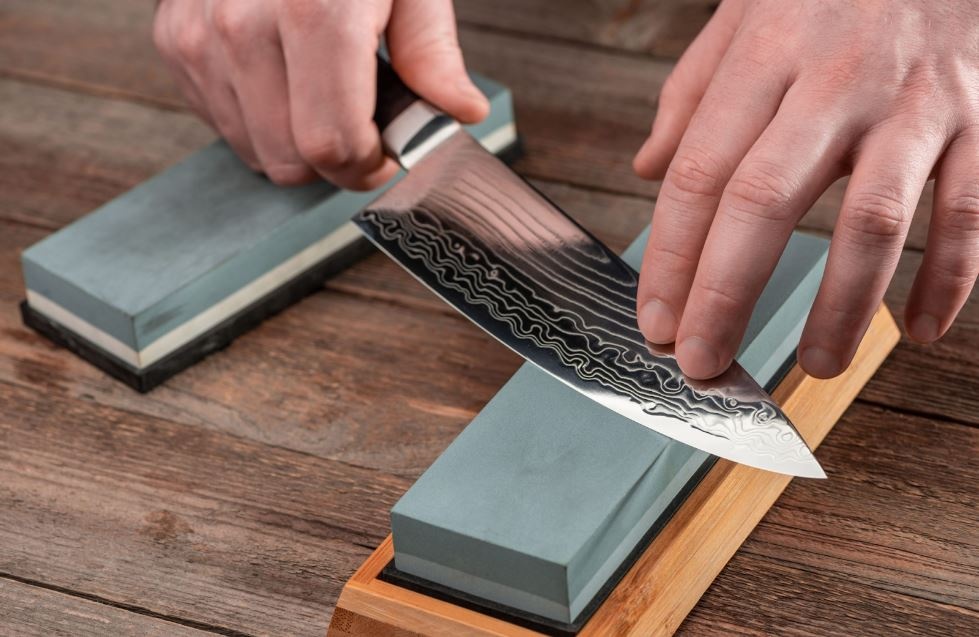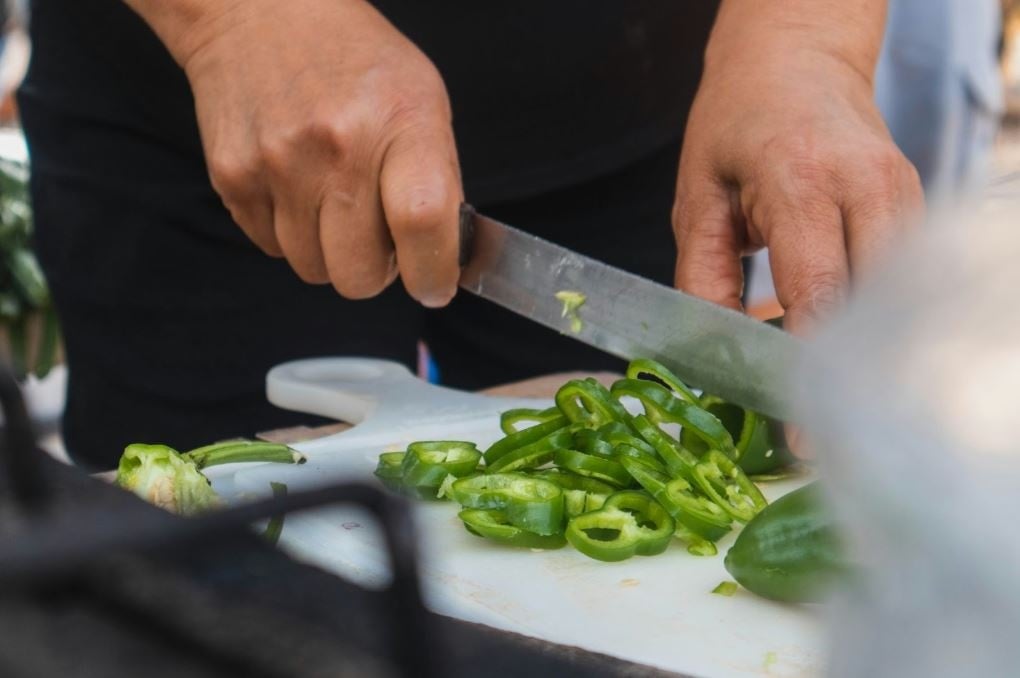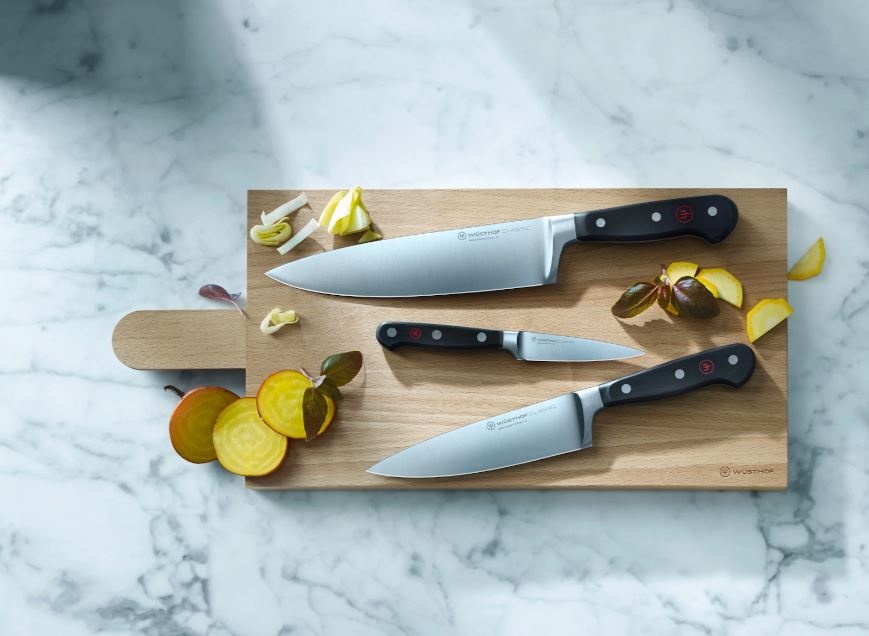Paige Knight - 10 / Sep / 2024
Sharpen Your Skills: Five Daily Knife Care Tips
Check out these 5 ways to appreciate the artistry that goes into crafting, using, and maintaining kitchen knives.

Knives are some of the oldest tools known to mankind, dating all the way back to Prehistoric Times. The earliest knives were made of flint and used mostly for protection and utility. Flash forward about 2.5 million years or so, and we still use knives for similar reasons, but present-day knives are way more than a crude tool for survival.
Today, knives are made using complex steel formulas, are crafted using ancient techniques, and hold deep cultural significance. In fact, knives have become such a staple in our society that we’ve come up with a whole day to celebrate them. Recognized annually on August 24th, National Knife Day gives knife enthusiasts an opportunity to celebrate knives of all shapes and sizes, from kitchen knives to survival and tactical knives.
As the largest walk-in kitchen knife retailer and sharpener in New England, we celebrate kitchen knives every day as we curate our specialized inventory, educate customers, and help people find their perfect kitchen companion. Learn from the experts about 5 ways you can celebrate National Kitchen Knife Day, everyday.
#1: Get Your First Kitchen Knife Set
Most people think they need a big set of kitchen knives, like the ones sold in a knife block. They end up paying a bunch of money for a ton of knives they barely use. Instead of buying a big block this National Knife Day, invest in quality by buying these 3 essential kitchen knives:
- Chef’s Knife: Even if you don’t know too much about knives, you’re probably familiar with a chef’s knife. Usually measuring 8” to 6” in length, this is most people’s most-used kitchen knife. The long, curved blade is well suited for a variety of cooking tasks, from mincing garlic to slicing through big cuts of meat, making it the perfect kitchen workhorse.
A good kitchen knife collection has a variety of knives that perform different functions, like a chef’s knife for heavy-duty tasks and a paring knife for the smaller details.
- Paring Knife: There are some tasks that are just too detailed for a big chef’s knife, and that’s where a paring knife comes in. Typically measuring between 3” and 4”, these smaller kitchen knives offer more control and are great for tasks that require a delicate hand, like peeling fruits and slicing small ingredients.
- Bread Knife: Bet you can’t guess what this kitchen knife is meant for. Like the name says, bread knives feature 10” to 12” blades with serrated teeth that are perfect for slicing through crusty bread without squashing the soft interior. Really, bread knives are great for sawing through anything that’s hard on the outside and soft on the inside, like tomatoes and even delicate pastries.
#2: Level Up Your Kitchen Knife Knowledge
Unlike Prehistoric knives made of crude flint, today’s kitchen knives are a complex and intricate art. Learning about kitchen knife steels is a complicated and rewarding endeavor that will have you learning new things every day. What’s more, learning the basics is essential to making informed kitchen knife purchases and becoming a better cook. Let’s get our feet wet by talking about the basic differences between Japanese and Western steel:
- Japanese Steel: Most people recognize Japanese steel by its characteristic Damascus patterning, but there’s a lot more to it than aesthetics. Japanese steel is thin, sharp, and perfect for tasks that require precision, like thinly slicing onions or cutting through delicate fish. On the flip side, Japanese steel can be brittle and sensitive, so it’s best to avoid using it for heavy-duty tasks that could cause chips.
- Western Steel:Western steel kitchen knives aren’t as sharp as their Japanese counterparts, but they make up for it in their toughness. These knives feature thicker blades that are up to the task of slicing big cuts of meat, spatchcocking poultry, and working around bones.
Knowing the difference between Western and Japanese steel is an important first step to making more informed choices in your kitchen. We usually recommend building a kitchen knife collection with a combination of Japanese and Western pieces to add variety to the tasks your knives can perform. To learn more about kitchen knives, check out our blog and Instagram.

Whetstones are great knife maintenance tools that shed minimal steel, lengthening the lifespan of your knives.
#3: Learn How to Maintain Your Kitchen Knives
You’ve found some kitchen knives that you love, but how do you make them last? Proper knife maintenance is a full-time job, and regularly tending to your knives will pay off in the long run. Here are some kitchen knife maintenance tips to start practicing on National Knife Day:
- Hone Your Kitchen Knives: Most people don’t know that there’s a difference between sharpening and honing, but we like to describe it as the difference between brushing your teeth and going to the dentist. Honing is like brushing your teeth; doing it daily or weekly helps to keep your kitchen knives sharp for longer.
- Sharpen Your Kitchen Knives: In our tooth care analogy, sharpening is like going to the dentist. It restores your kitchen knife’s edge in a way that honing alone cannot. We recommend taking your knife to be professionally sharpened or sharpening at home with a whetstone once every year or so.
- Hand Wash and Dry Your Kitchen Knives: Kitchen knives require more care than your flatware and dinner plates, and you can’t just throw them in the dishwasher without damaging them. Once you’re finished using your kitchen knives, make sure to hand wash and immediately dry them to avoid rusting.
#4 Expand Your Kitchen Knife Collection
Most people get on fine with the 3 essential kitchen knives, but it can help to have specialized knives for certain tasks. Once you’ve established a foundation, explore adding new kitchen knives to your collection as you evolve as a cook and new needs arise. Here are some of our top accessory kitchen knives to add to a collection:
- Santoku: The Chef’s knife’s vegetarian cousin, a Santoku is a slightly shorter and less curved blade that is perfect for chopping vegetables. I’d recommend pairing a Japanese santoku with a Western chef’s knife to add versatility to the tasks your knives can perform.
- Nakiri: Featuring a straight edge and rectangular shape, a Nakiri is another good option for chopping vegetables. Similar in function to a Santoku, this is another Japanese blade that could be paired with a Western chef’s knife for added versatility.
- Utility Knife: If you prefer doing prep work with a smaller knife, a utility or petty knife would be a great addition to your collection. Somewhere between a paring and a chef’s knife, these blades offer versatility without being as imposing as a chef’s knife.

Show your kitchen knives some love by using them to cook some killer meals.
#5: Get Cooking
There’s no better way to show your kitchen knives that you love than to get in the kitchen and start using them! This National Knife Day, toss out the takeout menus and get to cooking some of your favorite recipes. While you’re at it, check out our blog to try something new, like meat pies, award-winning chili, or your own homemade pesto.
Check out the Blackstone’s of Beacon Hill website to view our inventory of specialized kitchenware and home goods, and tag @blackstonesboston on instagram with your National Knife Day culinary creations.











